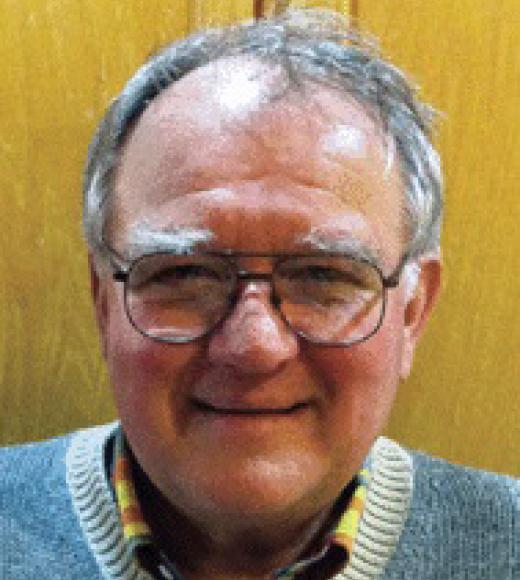
Position Title
Distinguished Professor
Endohedral Fullerenes and Empty Cage Fullerenes
The ability to place several lanthanide metal ions with their attendant magnetic and luminescent properties inside a relatively inert cage of 80 or so carbon atoms provides a new set of molecules for development as magnetic resonance imaging (MRI) contrast agents, as novel lumophores, and as hosts for radioactive nuclei. We are leaders the study of fullerene structure and reactivity. Recent work has demonstrated that the metal ions inside endohedral fullerenes influence the reactivity of the outside of the carbon cage. Moreover external supramolecular organization of endohedral fullerenes influences the positioning of the metal ions inside the cages. We have also demonstrated that the isolated pentagon rule (IPR), a basic tenant of empty cage fullerene structure, is frequently violated in endohedral fullerenes. For example Tb3N@Cs(51365)-C84 (Cs is the point group symmetry of the cage alone and 51365 designates which of the 51568 non-IPR cages this endohedral fullerene uses) has a peculiar egg-shaped structure due to the presence of two adjacent pentagons.
Polymorphs and Chemical Bonding
Polymorphs are isomers at the single crystal level. They can display significant structural differences in the interactions between molecules and these differences can lead to significant spectroscopic variations between the different crystalline forms of the same molecule. We are concerned with understanding the diversity of intermolecular interactions, particularly those that involve weak metal-metal bonding, that are found in various polymorphs.
Luminescence in d8 (PtII, PdII, IrI and RhI) and d10 (AuI, AgI, CuI, and HgII) Transition Metal Complexes
We are exploring the structural factors that lead to the formation of highly luminescent transition metal complexes that can be utilized as environmental sensors.
Crystallization of Unstable Molecules
We are developing methods to form crystals that contain relatively unstable molecules. This goal may be achieved by trapping the reactive molecule as a transition metal complex that forms during crystallization. In particular coordination polymers form likely hosts for the trapping of molecules of limited stability. The interstices between molecules can also provide the appropriate environment to trap reactive molecules. Crystallographic and spectroscopic studies of the trapped molecules will be performed and the chemical reactivity of these novel crystals will be studied.
Education, Awards and Profesisonal Highlights
- Distinguished Chemist Award, Sierra Nevada Section of the American Chemical Society (2012)
- F. A. Cotton Award for Synthetic Inorganic Chemistry, American Chemical Society (2011)
- Fellow of the American Chemical Society (2011)
- Fellow of the American Association for the Advancement of Science (2011)
- Associate Editor, Inorganic Chemistry (2006-Present)
- Advisory Editorial Board: Inorganic Chemistry Communications (2004-Present)
- Editorial Advisory Board: Journal of Cluster Science (1999-2006)
- International Advisory Editorial Board: Journal of the Chemical Society, Dalton Transactions (1998-2004)
- Metallobiochemistry Study Section NIH (1990-1994)
- Chair (1992-1994)
- Editorial Advisory Board: Inorganic Chemistry (1989-1991)
- Reiley Lecturer, Norte Dame University
- NSF Award for Special Creativity (1989)
- Appointed to UC Davis faculty (1970)
- Appointed to UC Los Angeles faculty (1966)
- M.A.; Ph.D. Harvard University (1965; 1967)
- NSF Predoctoral Fellow (1962-1963)
- Phi Beta Kappa
- B.A. Cornell University (1962)
Representative Publications
- Beyond the Butterfly: Sc2C2@C2v(9)-C86, an Endohedral Fullerene Containing a Planar, Twisted Sc2C2 Unit with Remarkable Crystalline Order in an Unprecedented Carbon Cage. Chen, C. H., K. B. Ghiassi, M. R. Cerón, M. A. Guerrero-Ayala, L. Echegoyen, M. M. Olmstead, A. L. Balch. Journal of the American Chemical Society, 2015, 137, 10116-10119.
- Synthesis and Structure of LaSc2N@Cs(hept)-C80 with One Heptagon and Thirteen Pentagons. Zhang, Y., K. B. Ghiassi, Q. Deng, N. A. Samoylova, M. M. Olmstead, A. L. Balch, A. A. Popov. Angewandte Chemie, International Edition in English, 2015, 54:495-499.
- Zipping up fullerenes into polymers using rhodium(II) acetate dimer and N(CH2CH2)2NC60 as building blocks. Aghabali, A., M. M. Olmstead, A. L. Balch. Chemical Communications 2014, 50, 15152-15155.
- Gadolinium-containing endohedral fullerenes: structures and function as magnetic resonance imaging (MRI) agents. Ghiassi, K. B., M. M. Olmstead, A. L. Balch. Dalton Transactions, 2014, 43:7346-7358.
- Sc2@C66 Revisited: An Endohedral Fullerene with Scandium Ions Nestled within Two Unsaturated Linear Triquinanes. Yamada, M., H. Kurihara, M. Suzuki, J. D. Guo, M. Waelchli, M. M. Olmstead, A. L. Balch, S. Nagase, Y. Maeda, T. Hasegawa, X. Lu, T. Akasaka. Journal of the American Chemical Society, 2014, 136, 7611-7614.
- Preparation and Crystallographic Characterization of C60{eta1-Ru(CO)2(eta5-C5H5)}2: A Locally Crowded Organometallic Fullerene Without the Usual eta2-Bonding. Bowles, F. L., M. M. Olmstead, A. L. Balch. Journal of the American Chemical Society, 2014 136:3338-3341.
- Endohedral fullerene with u3-carbido ligand and titanium-carbon double bond stabilized inside a carbon cage. Svitova, A. L., K. B. Ghiassi, C. Schlesier, K. Junghans, M. M. Olmstead, A. L. Balch, L. Dunsch, A. A. Popov. Nature Communications, 2014, 03 April 2014:1-8.
- Inorganic topochemistry. Vapor-induced solid state transformations of luminescent, three-coordinate gold(I) complexes. Lim, S. H., M. M. Olmstead, and A. L. Balch. Chemical Science, 2013, 4:311-318.
- A missing link in the transformation from asymmetric to symmetric metallofullerene cages implies a top-down fullerene formation mechanism. Zhang, J. Y., F. L. Bowles, D. W. Bearden, W. K. Ray, T. Ye, Y. Q. Fuhrer, C. Dixon, K. Harich, R. F. Helm, M. M. Olmstead, A. L. Balch, and H. C Dorn. Nature Chemistry, 2013, 5:880-885.
